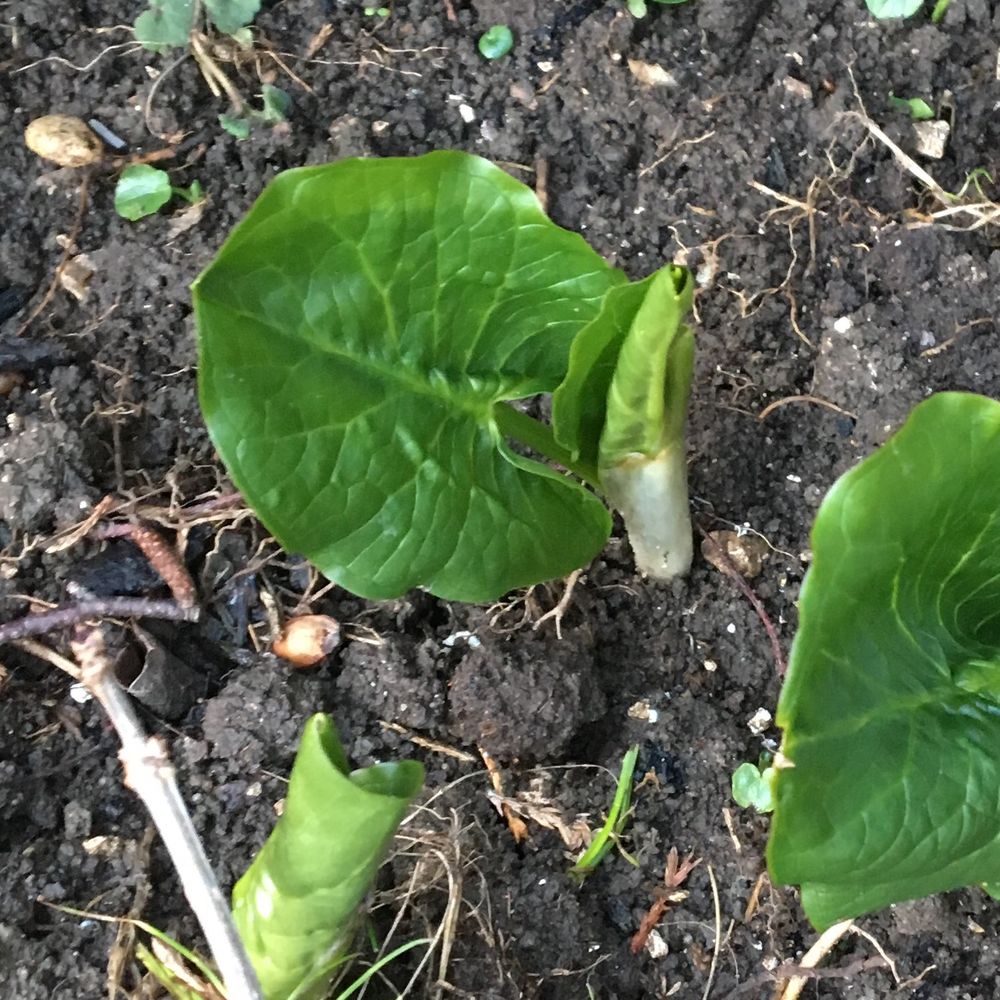Arum
(Arum)

Description
Arum italicum, also known as Italian arum or Italian lords-and-ladies, is a species of flowering plant in the family Araceae. It is native to the Mediterranean region and is widely cultivated as an ornamental plant for its attractive foliage and flowers. Botanical Description: Arum italicum is a perennial herb that grows to a height of 30-60 cm. The leaves are large, glossy and arrowhead-shaped, and can grow up to 60 cm long and 30 cm wide. The leaves emerge in early spring and persist until late autumn, providing an attractive backdrop for the plant's flowers. The flowers of Arum italicum are small and inconspicuous, and are produced in a spadix (a fleshy spike) surrounded by a large, white or greenish-white spathe (a modified leaf). The spadix is covered in tiny flowers that are pollinated by insects. Cultivation: Arum italicum is a hardy plant that is relatively easy to cultivate, making it a popular choice for gardens and landscaping. It prefers well-drained soils in partially shady locations and can tolerate a wide range of soils and growing conditions. The plant is propagated by division of the rootstocks or from seed. Division should be done in the spring or autumn, when the plant is not actively growing. If propagating from seed, it is best to sow the seeds in a well-drained seed compost and keep them at a temperature of 15-20°C. Germination can take several weeks to several months. Uses: Arum italicum is widely cultivated as an ornamental plant for its attractive foliage and flowers. It is a popular choice for woodland gardens, rock gardens and as a specimen plant in borders and containers. In addition to its ornamental value, Arum italicum has been used in traditional medicine for a variety of ailments, including skin conditions, respiratory problems and digestive issues. The plant's leaves, roots, and berries contain various compounds with medicinal properties, including alkaloids, tannins, and flavonoids. Conclusion: Arum italicum is a versatile and attractive plant that is well-suited to cultivation in a range of growing conditions. Whether grown for its ornamental value or for its medicinal properties, this plant is a valuable addition to any garden or landscape. Its striking foliage and flowers make it a standout addition to any planting scheme, and its ease of cultivation makes it a low-maintenance choice for gardeners of all skill levels. Arum genus Arum, genus of low-growing tuberous perennial plants in the family Araceae (order Arales). Of the 32 species generally recognized, a few are grown for their showy spathe, a funnel-shaped bract surrounding the rodlike spadix (on which the tiny flowers are borne), and for their glossy, arrow-shaped leaves. The bitter, burning taste of the plant-s sap may have led to the genus name Arum, from the Arabic word for fire (ar). The sap can be poisonous, especially as concentrated in the whitish rootstock and the brilliant red berries. In most cases the spathe is a dull yellow-green outside, but it may be varicolored and often curves back to expose the inner surface. The more colorful varieties are handsome plants for a shaded wild garden. The best-known species is the cuckoopint (Arum maculatum), also called lords-and-ladies. This plant is native to southern Europe and northern Africa. Plants of the genus are not hardy much below freezing temperatures.
Taxonomic tree:







